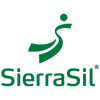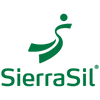Blog
You wake up in the morning and your knees are creaky and sore. You have noticed swelling and redness around your wrists and knees. You feel like your knees and fingers don’t move as easily as they once did. These...
Continue reading
Everyone can be fit. What is important is in recognizing and accepting what being fit means for you. Of course, your top fitness is very different from that of a 20-year old hockey player or a 40-year old lifelong runner....
Continue reading
There is nothing more debilitating than arthritis. This very common disease knows no boundaries when it comes to age, sex, or race – it is the leading cause of disability in the United States. Often associated with joint swelling, redness,...
Continue reading
What is affordable, accessible and a form of preventative medicine? If you guessed Nature, you’re correct. Many studies show significant health gains for those in contact with nature. Spending time in nature can: Reduce anxiety and depression Relieve stress Improve...
Continue reading
Helping ease aches and stiffness is an important and growing subject to millions of North Americans according to Vitamin Retailer Magazine. Writer Hilary Daninhirsch took a deep dive into the myriad of natural joint health product options with input from...
Continue reading



